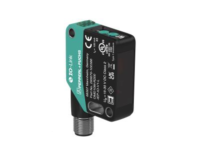
Technology has become an essential element of our lives, and when we say high-end technology, the first thing that comes to our mind is 3D technology.
Today, 3D technology is considered one of the most crucial technological advancements considering the evolution of Metaverse and 360° virtual reality platform. With this, the 3D Sensors came into the limelight, which is an essential element of such a 3D world. 3D sensors proved to be a scientific breakthrough for the tech industry as it has completely changed how we all used to interact with technology. Let us understand some key aspects of 3D sensors below.
3D Sensors
The 3D Sensor is an in-depth sensing technology that enhances the capabilities of the camera for facial and objects recognition. It is a unique technique of recording and analyzing the dimensions of a real-life object with great clarity and in-depth details through varied angles and creating a 3D virtual image that can be used to replicate the real-life object into the virtual world with 360° vision and smart AI assistance.
The additional features make the 3D Sensor a true game-changer in the tech industry. Several manufacturing companies are putting this technological marvel into consumer-centric products such as smartphones and video games in order to keep up with demand.
The human visual system is replicated by applying cutting-edge optical technology in 3D sensing technologies. The process of the emergence of AI (artificial intelligence), augmented reality, and the Internet of Things (IoT) has been simplified and improved because of this technology, which has also facilitated this process.
Key 3D sensing types
The technology behind 3D sensing is constantly being improved so that it may be used in more vivid applications. This augmentation is made possible by several different technologies, each of which has both advantages and disadvantages.
The process of building new 3D systems involves high-quality sensors and efficient algorithms, which allows for the exploitation of newly developed and already existing technology.
Stereoscopic vision, structured light patterns, and time of flight are the three primary technologies utilized in 3D sensing. Let’s begin with a little introduction to each of these in the below section.
Stereoscopic Vision
This technology is designed to function in a manner that is analogous to how human eyes take in or perceive any given image or object. In order to simulate the human eye, two cameras have been placed in locations that are slightly balanced with one another. After that, the software combines the two photos that were taken into a single image. Due to the cameras’ various positions, subtle variances combine to form the stereoscopic or 3D image.
A laser projection module is located within the field of view of the enhanced stereoscopic vision, which will project a series of dots onto the subject or scene in order to facilitate an easy method of focusing the camera. The collected image is processed in such a way as to create the effect of depth. This technology is utilized in CCTV cameras, which are installed to monitor people’s movement at door entrances and other public locations to maintain public safety.
Structured Light Pattern
A laser projection module is used to cast a pattern of light onto a scene or an object. Squares (periodic structures), dots, and lines all make up the illuminating pattern. The light that is reflected back into the eye produces an irregular pattern.
The next step is for a camera positioned at a right angle to the projection module to collect the reflected light from the target. Triangulating the projection module with the camera distorts the pattern, making it easier to get 3D coordinates of the object or scene being viewed.
For example, iPhone X’s True Depth Camera makes use of structured light for its 3D depth mapping. This technology is integrated into the front-facing camera of the phone and uses an infrared emitter to project a pattern of more than 30,000 dots onto the user’s face. A reliable infrared camera then snaps pictures of the dots for further examination, and the processed image is then used to unlock the phone with the face recognition technique.
Time of Flight
Time of Flight technology uses a projection module that sends out sharp, brief bursts of light. A camera component records these jolts and incorporates them into the system. To do this, one must determine how long light travels from the source to the item and back to the camera. A 3D image is created by processing the input with coordinates.
Among the many applications for time-of-flight camera sensors is the measurement of distance, the scanning of objects, the detection of gestures, the tracking of objects, indoor navigation, reactive altimeters, the measurement of volumes, 3D photography, and augmented reality games.
Conclusion –
Considering all these things, we can conclude that the 3D Sensors are making the world evolve with a slight turnaround by creating real-life virtual experiences by getting inspired by the real world.
With this, it is evident that the market for 3D Sensors is going to earn a substantial revenue during its forecast period, and with respect to the studies conducted on the said market segment, it is predicted that the global 3D Sensors market will have an impeccable growth rate of 28% for the forecast period that ends in 2023.
With all this, now is the time for us to be ready to welcome and accept this high-end 3D sensing technology in our daily lives, which will eventually make our lives easier and more comfortable.



















